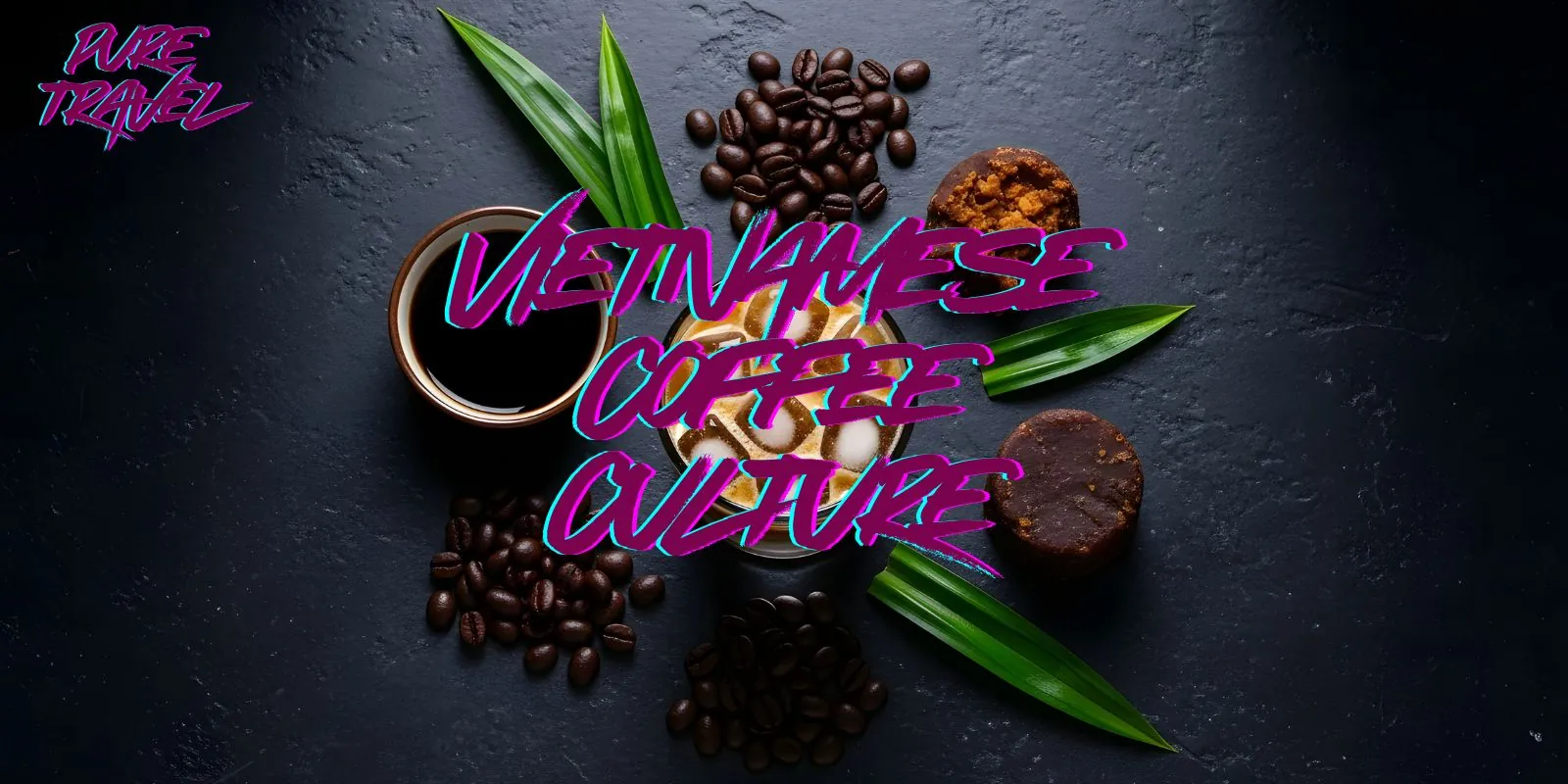Vietnamese Coffee Culture – Think Terrific Egg to Coconut
Wandering through Hanoi’s Old Quarter, we followed the irresistible aroma of freshly brewed Vietnamese coffee. Vietnamese Coffee Culture From hidden alley cafés to lakeside espresso bars, today was all about tasting Vietnam’s coffee heritage — one Phin drip at a time. Our caffeine-fueled adventure revealed why Hanoi truly is the heart of Vietnamese coffee culture.
We woke up to the hum of scooters and the faint aroma of roasted beans drifting through the narrow streets below our hotel balcony. Today’s plan was simple yet perfect — a self-guided coffee crawl through Hanoi’s Old Quarter. As lovers of both culture and caffeine, we couldn’t wait to explore how the locals enjoy their morning brew, street-side and unhurried.
Morning: Egg Coffee at Café Giảng
Our first stop was Café Giảng, tucked away down a small laneway on Nguyễn Hữu Huân Street — the birthplace of the legendary Cà Phê Trứng (Egg Coffee). The café’s old wooden walls and soft yellow lighting transported us straight into the 1940s. We ordered two cups for 40,000₫ each (about AUD 2.50). The drink arrived steaming and velvety — a rich layer of whipped egg yolk over intense Vietnamese coffee. The first sip was heavenly — warm, creamy, with a custard-like sweetness that coated the tongue.
The air inside smelled of toasted coffee beans and caramel. Outside, motorbikes whizzed by, their horns forming a chaotic yet rhythmic soundtrack. Locals chatted quietly, some reading newspapers, others scrolling through phones — all with coffee in hand. It struck me how seamlessly coffee was woven into everyday life here, not as a caffeine fix but as a daily ritual.
Midday: Coconut Coffee by Hoàn Kiếm Lake
By midday, the sun shimmered off the surface of Hoàn Kiếm Lake, and the humidity called for something cool. We stopped at Cộng Cà Phê, one of Hanoi’s most loved chains, known for its vintage wartime décor and signature Cà Phê Dừa (Coconut Coffee). For 65,000₫ (around AUD 4), we received two tall glasses brimming with icy slush and a bold coffee base sweetened with coconut cream. Each sip was tropical and refreshing — like dessert in a glass.
Sitting by the window, we watched young couples taking selfies by the lake, old men fishing in silence, and street vendors balancing baskets of fruit on their shoulders. Vietnamese Coffee Culture The mix of sounds — street chatter, gentle splashes from the lake, and faint pop music from a nearby stall — created an atmosphere that was both chaotic and calming. We lingered longer than planned, just soaking in the moment.
Afternoon: Exploring Hidden Coffee Corners
After lunch — a quick bowl of Phở Gà (Chicken Noodle Soup) for 50,000₫ each (AUD 3) — we continued deeper into the Old Quarter. Hanoi’s narrow alleys revealed one café after another, each with its own story. At Loading T Café, we tried Salt Coffee (Cà Phê Muối), a curious blend that balanced sweetness with a hint of savory cream. The barista explained it originated in Hue, and indeed, the contrast of salt and coffee was surprisingly addictive.
Later, we stumbled upon The Note Coffee, a multi-level café covered wall to wall in colorful Post-it notes. Tourists and locals had left messages in dozens of languages — love notes, travel memories, life advice. We left our own: “Fueled by coffee, forever exploring — S & A, from Australia.”
Evening Reflections: Hanoi by Night and the Perfect Brew
As dusk settled, the city’s energy softened. The lanterns glowed along the streets, and the aroma of grilled meat and garlic filled the air. We found a quiet rooftop café overlooking the lake and ordered our final drink — traditional Cà Phê Sữa Đá (Iced Milk Coffee). At 45,000₫ (AUD 2.80), it was simple yet unforgettable. The strong Robusta blend, slow-dripped through a Phin filter, mingled perfectly with the condensed milk and melting ice. I could taste the day’s journey in every sip — bold, sweet, and utterly Vietnamese.
Over dinner — grilled pork skewers and fried spring rolls — we reflected on how coffee here wasn’t just a beverage but a bridge between people. Each café, whether a modest stool on the sidewalk or a trendy rooftop spot, carried its own rhythm, its own personality. And through each cup, we felt closer to the soul of Vietnam.
Pro Traveler Tip – Vietnamese Coffee Culture
Start early! Many traditional coffee shops open by 6 AM, when locals gather before work. Early mornings are the best time to see Hanoi at its most authentic — the streets are alive, the coffee’s fresh, and the city hums with quiet anticipation. Don’t rush your cup; Vietnamese coffee is meant to be savoured slowly.
Pro Traveler Warning
Watch out for tourist pricing. In popular areas like Hoàn Kiếm, some cafés may double their prices for visitors. Always check the menu before ordering, and avoid pushy street vendors offering “special” local coffee — they often charge inflated rates or serve low-quality blends. Stick to well-reviewed local cafés for a genuine experience.
Travel Costs Summary – Vietnamese Coffee Culture
- Egg Coffee (Café Giảng): 40,000₫ (~AUD 2.50)
- Coconut Coffee (Cộng Cà Phê): 65,000₫ (~AUD 4)
- Lunch – Phở Gà: 50,000₫ (~AUD 3)
- Salt Coffee (Loading T Café): 55,000₫ (~AUD 3.50)
- Iced Milk Coffee (Rooftop Café): 45,000₫ (~AUD 2.80)
- Total Day Spend: ~255,000₫ (~AUD 16.00)
Your Coffee Journey in Vietnam
Today’s trail through Hanoi wasn’t just about tasting coffee — it was about understanding its place in Vietnamese life. From eggy froth to coconut sweetness, each cup told a story of resilience, creativity, and warmth. If you ever find yourself in Hanoi, follow your nose — it’ll lead you not just to great coffee, but to the beating heart of Vietnam itself.
FAQ: Vietnamese Coffee Culture
1. What makes Vietnamese coffee unique?
Vietnamese coffee is typically brewed using a small metal drip filter called a Phin, which creates a strong, concentrated brew. It’s often made with Robusta beans, known for their bold flavor and higher caffeine content, and enjoyed with sweetened condensed milk instead of fresh milk.
2. What is Egg Coffee and where can I try it?
Cà Phê Trứng (Egg Coffee) is a Hanoi specialty made by whipping egg yolks with sugar and coffee, creating a creamy, dessert-like drink. The best place to try it is Café Giảng — the original café where it was first created in the 1940s.
3. What are the most popular types of Vietnamese coffee?
Some must-try varieties include Cà Phê Sữa Đá (Iced Milk Coffee), Cà Phê Đen (Black Coffee), Cà Phê Dừa (Coconut Coffee), Cà Phê Muối (Salt Coffee), and Cà Phê Trứng (Egg Coffee). Each region in Vietnam has its own signature twist on these classics.
4. Is coffee an important part of Vietnamese culture?
Absolutely. Coffee is more than a beverage in Vietnam — it’s a social ritual. Locals gather at street-side cafés for slow mornings, deep conversations, and people-watching. It’s a cornerstone of daily life and community connection.
5. Where are the best places to experience Vietnamese coffee culture in Hanoi?
Start at Café Giảng for egg coffee, Cộng Cà Phê for coconut coffee, and Loading T Café for salt coffee. Wander the Old Quarter’s hidden alleys or sit lakeside at Hoàn Kiếm for a quintessential Hanoi coffee experience







